When I first started keeping rabbits, I knew that they tended to shed a little. I didn’t realize that they can shed much fur, and I wasn’t sure why.
I asked the former owner, who has been in the rabbitry business for 15 years.
Why is my rabbit shedding so much? Rabbits can shed throughout the year, but they noticeably molt twice a year. However, at times an underlying health condition can cause excessive shedding. Dental problems, parasites, mites, and infections can cause patched fur loss.
Treating the underlying issue is essential so your rabbit is healthy. In some cases, health problems can cause the death of your bunny.
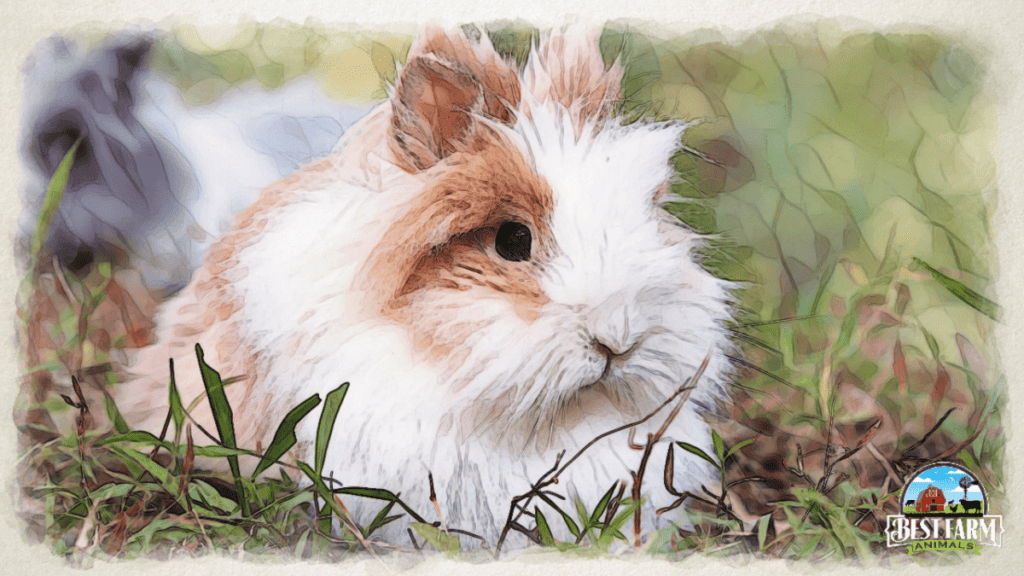
What Is Rabbit Molting?
What does it mean when a rabbit is molting? Rabbit molting refers to the process in which a rabbit sheds or casts off their coat at specific times of the year. In simple words, it refers to the shedding of old coast to make way for a new coat. The main reasons why rabbits shed their fur is to replace damaged coats and adjust to temperature changes.
For example, a bunny will molt and grow a thick fur coat to keep warm in the winter. Then, it sheds its thick coat and grows a new thinner coat to keep cool in the summer. Rabbits molt every five to six months, meaning that they shed their fur twice a year. However, research suggests that a bunny may molt more than twice a year, even every few months.
Light shedding on the rabbit coat may go unnoticed. And that’s why researchers think that rabbits molt more often than we think. I’ve also observed that most baby rabbits molt more frequently than their adult counterparts.
Some rabbits shed their old coat in days, while others shed all of their old coat in a few weeks. But you may notice that your rabbit may take almost one month to shed off completely. I frequently go in to assist some of the bunnies by gently pulling some hairs with my fingertips.

Signs Your Rabbit Is Molting
What are the signs of a molting rabbit?
One of the first signs of rabbit molting is fur becoming loose and easily falling off. Sometimes the fur may fall off in chunks. Other signs of rabbit molting include eating less than usual, changes in temperatures, and change in fur color. I have also seen my rabbits become grumpy when molting. They look sad and some even refuse to eat.
At times, molting rabbits run away from me when I call them or move closer to them. Other rabbits will be aggressive and run at you as if they want to attack. You want to cool them down holding them down on the ground while massaging their ears. However, take care not to hurt them during this process.
I’ve noticed that some rabbits become aggressive during molting due to sensitive skin. New fur growth may cause the skin to redden and hurt. Of course, I usually avoid brushing the rabbit’s coats at this time.
Healthy Rabbit Shedding
It’s normal and healthy for rabbits to shed somewhat continually. However, every few months, rabbits go through a molt. The springtime molt is the largest and will be noticeable.
You may pet or hold your rabbit and notice a LOT of hair. Your rabbit may look patchy with shorter new hair growth and longer hair that might be clumpy looking ready to shed. That’s ok and healthy.
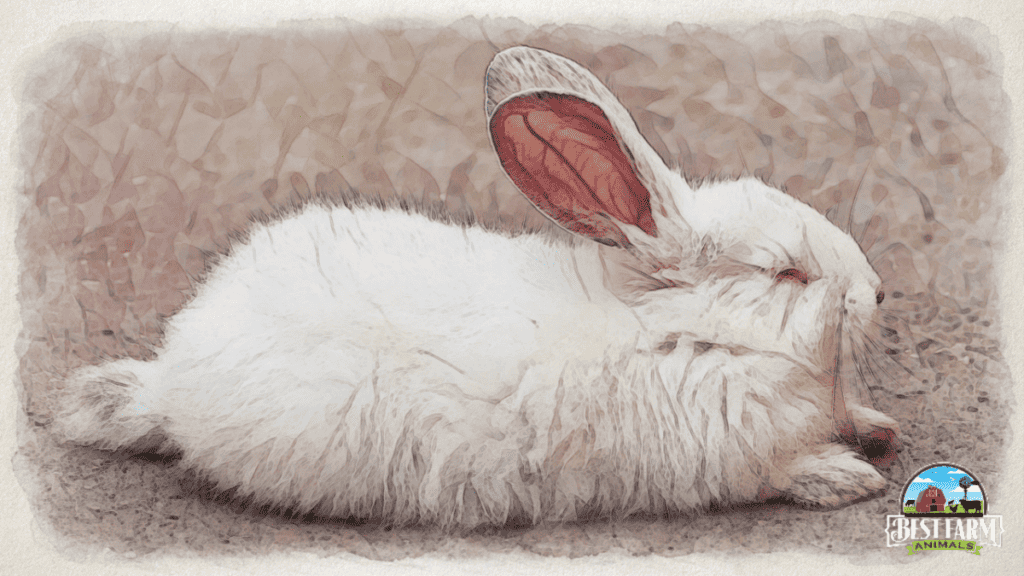
How Much Shedding Is Normal For A Rabbit?
According to the University of Miami, heavy rabbit shedding should occur twice a year. Even though, as I mentioned earlier, a rabbit may experience shedding every three months but this may go unnoticed. With that said, a rabbit that molts every other week is said to be experiencing too much shedding.
That’s because the fur coat has to grow old or get damaged before a rabbit sheds. If your bunny sheds too much, its coat may turn red or become very sensitive, affecting its mood and health.
Your rabbit has to shed its entire winter coat so that it doesn’t overheat in the summer. The fur your rabbit grows for the summer will be lighter and help to regulate its temperature.
The fall molt prepares bunnies for the colder winter weather. Even if your bunny lives indoors with you, your rabbit will get a winter coat. That’s because daylight change patterns bring on the molt.
How Long Is Rabbit Molting Season?
In most cases, molting lasts anywhere between two weeks and one month. However, rabbit molting in some bunnies may last up to six weeks. Rabbit molting usually occurs in spring and fall. Spring lasts from March to May while summer starts in June, so expect to see most of fur shedding in May just before summer starts.
Fall ends in November and winter starts in December. That means most rabbit shedding will occur in November to grow new coat fur for December.
Some bunnies will change colors when they grow their winter coat in. That’s always a fun pet. My kids are fascinated every year and give me a day-by-day account of what they see and how the white grows in.
Most rabbits also have a smaller “molt” that happens in the summer and winter. I hesitate to call it a molt because it’s really not a molt, and most rabbit owners don’t notice.
A molt usually means that an animal is replacing all of its fur. Rabbits don’t do that four times a year. They do that twice.
But, you’ll find references to it online. It means that your rabbit may lose a small amount of hair all year around.
Off-season molting is not healthy or normal. If your rabbit is molting continually or at the wrong times, there may be something wrong. Check for signs of distress, hair pulling, stress, or scabs.

Normal Molts of Young Rabbits
Baby rabbits, called kits, go through a series of molts as they grow. At about five months, give or take a couple of weeks, your bunnies will molt and lose their baby fur. They’ll grow in their adult fur. After that, your adult rabbits will molt about twice a year in the spring and fall.
You may overlook the young-rabbit molt because the kit’s fur is fine and not as noticeable when it sheds. You’ll definitely notice the first springtime molt, though!
Molting Problems
Sometimes when your rabbit is molting, the old fur doesn’t shed as it should. It can stick and look lumpy. Other times, you may see bald patches on your rabbit.
When a rabbit fails to shed its fur during molt, it’s called stuck in the molt. Stuck in the molt can cause clumps of hair or heavy matting in parts of your rabbit’s body. Often this happens around the legs, in the pits, under the belly, or by the tail. It can also occur in other places.
It’s important to brush and help groom your rabbit during its molt. This allows your rabbit to shed fur easier. It also has the added benefit of making the cage and surrounding area less messy. Since it’s important to brush your rabbit daily, you’ll already be in the habit when the molting season comes around.
During the molt, make sure to brush those hard-to-reach areas. Your rabbit can’t always get to the tricky places, and brushing them will help them not to get stuck in the molt.
During the molt, feed your bunny a little extra protein. Fur requires protein to build, and your bunny will benefit from a bit of protein boost.
Suppose you see bald patches on your rabbit; look for signs of irritation. Check to see if the skin is red, inflamed or if your rabbit seems to be scratching at it. Look for tiny black spots, sores, or scabs. All of these are signs of an underlying problem.
If the skin looks pink, healthy, and clear, then don’t worry about bald spots. They are prevalent during a molt.
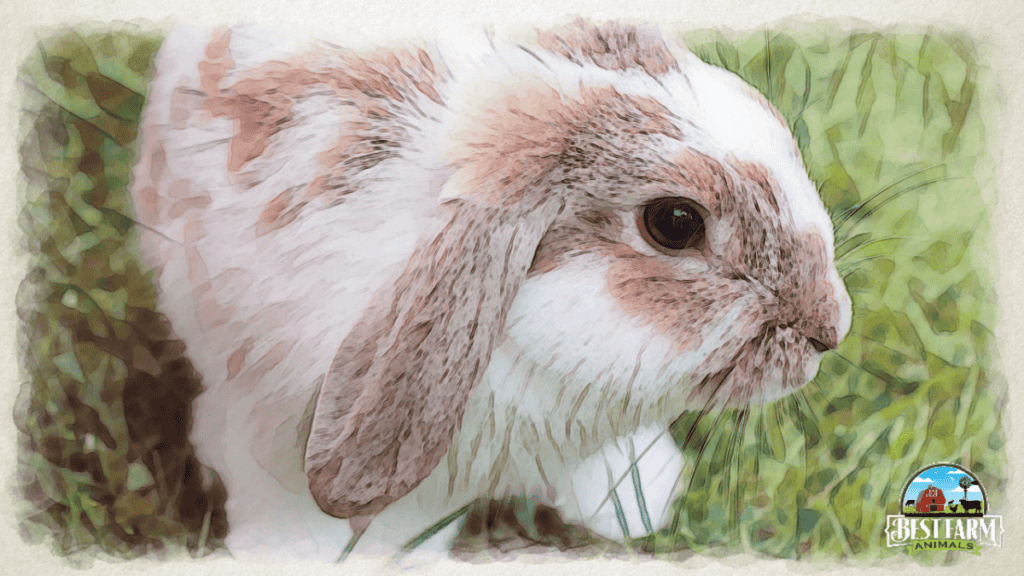
Caring for Your Shedding Rabbit During Molt
Rabbits naturally increase their grooming activities during their molt. You should brush your bunny’s hair daily. This helps to keep your rabbit healthy and clean. It also helps with bonding between you and your rabbit.
But, it’s imperative to groom your rabbit during molting season. That’s because brushing and cleaning your rabbit will help the old fur come off and make way for the new coat. It helps prevent matting of the hair, which can attract bugs and be an incubator of germs. Another benefit is that you can pull off all the excessive fur. This limits the amount of hair your rabbit will ingest. If your rabbit digests too much fur, it can cause digestive issues. The hair can block part of their digestive tract, causing other problems.
Feed your rabbit free-choice hay. Timothy hay, orchard grass, or oat hay are all excellent choices for rabbits. You can very sparingly feed your rabbits alfalfa, which isn’t actual hay. Alfalfa has a high sugar content and isn’t great for rabbits regularly, but during molt is ok.
Change your rabbit’s water more frequently during molting. Clean water will encourage more significant drinking, which helps with molting.
You can also feed your rabbits a little extra protein to help them create new fur. Fur takes a lot of protein to make, and your bunny will benefit from few protein snacks. Give your rabbit protein in the form of little sunflower seeds. Give your rabbit a little time outside for exercise as most protein snacks also have more calories.
- Daily grooming
- Free choice hay
- Clean water
- Occasional protein treats.
Unhealthy Reasons Rabbits Molt (Signs to Watch For)
Sometimes, you may wonder if your rabbit is having a healthy molt, especially if it’s not the right time of the year for a molt. There are two main reasons rabbits molt off-season.
First, inbred rabbits can molt off-season. For some reason, inner breeding causes an issue with a rabbit’s natural molting cycle.
It’s essential not ever to breed rabbits that are related to each other. And, it can happen accidentally if you aren’t careful. Rabbits are highly prolific and breed very quickly. They also reproduce very young. Sometimes owners aren’t aware that bucks can breed at three months old. That can mean that a baby gets his mama or sister pregnant.
Rabbits may also molt if their light cycle is messed up. If your rabbit has an unusual situation where they are exposed to light at unusual times of the day or night for a prolonged period, it can mess with their natural light rhythms. For example, if you work late night shifts and spend time caring for or bonding with your rabbit during the night, it may impact your rabbit’s natural light cycle and affect the molt.
- Inbreeding can cause issues with molt cycles.
- External issues that cause light cycle interruptions
In addition to reasons your rabbit may molt off-season, you may notice a loss of fur. Several issues can cause fur loss.
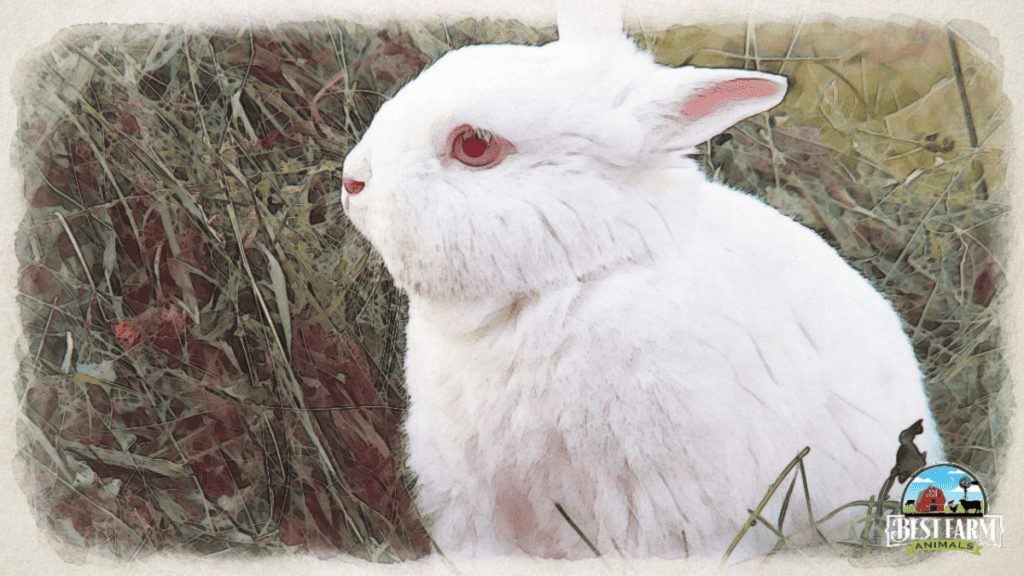
Fur Loss or Baldness Can Be a Sign of An Issue
Sometimes fur loss, or baldness, is a sign of a more serious underlying problem. A frequent sign of a problem is rabbit hair loss. Many diseases have hair loss as a symptom.
So, how can you know if your rabbit is healthy if it’s losing hair?
Hair loss is a sign of distress and often accompanied by other signs of stress in your rabbit. You may have noticed a behavioral change. Check the bald, patchy spots on your rabbit. Look for redness, swelling, or inflammation. Check the skin for signs of scratching or rubbing. Does it look like your rabbit is bothered by the area and biting or scratching at it?
Rabbits pull out their fur when they are stressed or in pain. One common reason a rabbit may start pulling out its fur is that it’s pregnant and is building a nest. Rabbits that are stressed will pull their hair out. This can happen from a predator threat (even your family dog) or loneliness. Be observant to see if your rabbit exhibits signs of fear. Rabbits like to be with other rabbits and can stress out if they are alone.
Boredom can cause hair pulling as well. Provide your rabbit with other toys and spend more time with it.
Additionally, there may be a deeper underlying issue. Mites, fleas, and parasites can cause your rabbit pain and discomfort. This, in turn, leads to hair pulling. Check for fleas or eggs on your rabbit’s skin. Check out 10 reasons your rabbit has bald spots.
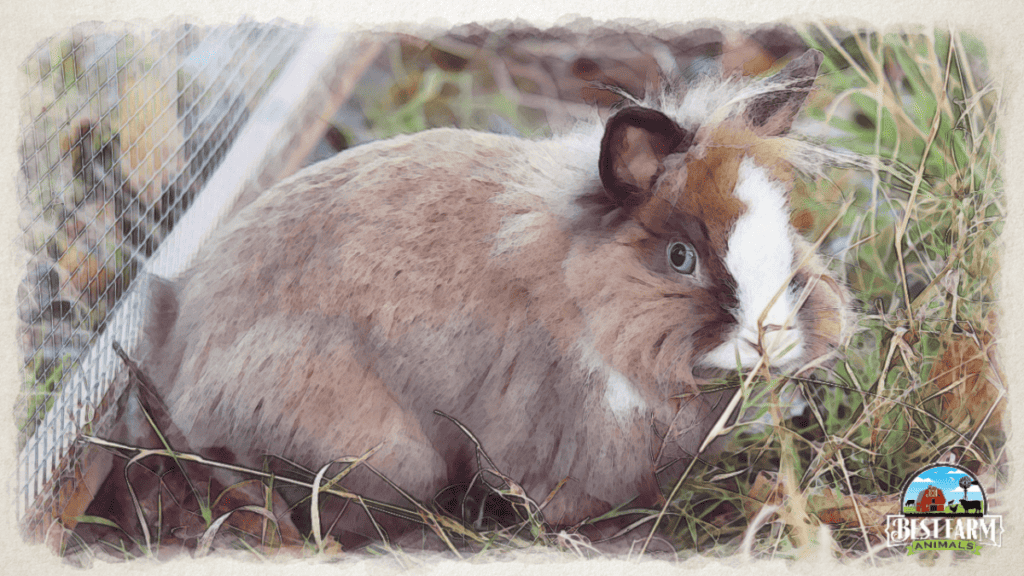
Stop the Molt
You may be wondering how or if you can stop your rabbit from molting. Molting is important and natural for rabbits. Do not try to stop a molt.
If your rabbit’s molt takes a long time, you may need to help it finish it. Molts that take longer than 4-6 weeks is excessive. 2-4 weeks is standard.
How Do I Help A Struggling Molting Rabbit?
Make sure your rabbit is getting enough protein. Usually, if your rabbit has free-choice access to hay, it will have enough protein. If you are worried, you can give your bunny more protein. Small nuts such as sunflower seeds are a great treat. Keep the treats small. Even a tablespoon of chopped nuts daily can be excessive in calories to your bunny.
Do an environment check of your rabbit. Make sure that there aren’t external stressors. Check that your rabbit has dark nights. If the cage is by an outside light or you are up after dark, put a cover on the cage. This will help with the light cycles in your bunny.
Check if your rabbit is bored or lonely. Add some toys to keep it entertained. You can also add a buddy’s cage near your rabbit cage or spend more time with it.
Lastly, have regular checkups with your rabbit so that your vet can identify any issues that can affect your rabbit’s health.
- Give your rabbit a dark night’s sleep
- Provide toys for boredom
- Watch for signs of stress
- Provide a protein treat during molting
Frequently Asked Questions
How Long Do Rabbits Molt? Rabbits molt for 2-4 weeks. They will molt at least 1-2 times a year for their entire lives. If a rabbit’s molt takes longer than 2-3 weeks, they are stuck in the molt and should be groomed regularly and given a diet high in fiber. A little added protein can also help them get through their molt.
Is It Ok For My Rabbit to Eat Its Fur? Rabbits groom themselves daily. Their grooming activities instinctually increase during the molt. It’s normal for them to digest some of their fur. But, it is not normal for rabbits to actively eat their fur. Fur can become lodged in their digestive tract and cause digestion issues.
Why is my bunny grooming another rabbit? Rabbits groom each other as a sign of dominance. Most of the time, doe’s will pull hair from other doe’s or bucks. Before two rabbits bond, they will often fight, and that will include hair pulling.
Do rabbits act different when shedding?
Every rabbit will act differently during the shedding process. They become moody, eat less, and may even become aggressive by attacking other bunnies or running toward you. Other rabbits will want to be left alone, so they isolate themselves from people or other bunnies.
Is shedding uncomfortable for rabbits?
Heavy shedding, also known as molting, feels uncomfortable for most rabbits. The growth of a new coat may cause the skin to be sensitive. You may notice this when you touch the bunny. The rabbit may look like it’s reeling in pain. However, light shedding may not be as uncomfortable.
Do rabbits eat more when they shed?
Rabbits lose appetite when shedding, so they tend to eat less during this period. In most cases, they’ll eat half or less than half of what they usually eat. Some rabbits will entirely stop eating. The loss of appetite is mostly associated with the distraction that comes from the sensitive coats or inflammation due to shedding.
Conclusion
While fur loss is normal and healthy for rabbits, it can be disconcerting the first time you notice it. But caring correctly for your rabbit can ensure that unhealthy fur loss doesn’t occur and that you are prepared to recognize it if something goes wrong. For more information, check out 10 Scary Reasons Your Rabbit Has Bald Spots.
Recommended Rabbit Supplies
This list contains affiliate products. Affiliate products do not cost more but helps to support BestFarmAnimals and our goal to provide farm animal owners with accurate and helpful information.
Housing: If your rabbit is indoor, you’ll need a cage, a hideout (to keep your rabbit from death by heart attack), and a space for it to get exercise and spend time with you. If you don’t want to let it run free in your house, this animal playpen provides space and keeps your rabbit from hiding under your couch.
If you keep your rabbit outdoors, an outdoor hutch that provides space and protection from predators is needed. (I’d still keep mine in a barn for further protection from the elements.)
You’ll also need bedding, toys, a grooming brush, and treats for your little friend. A litter box is important because rabbits can be potty trained. Timothy hay is the best kind of hay for rabbits as alfalfa is too sweet. Don’t forget a water drinker. I like the half-gallon waterer because it can cover two rabbits for several days. Pair it with a food bowl or a food manger (a little cleaner) and you’ll be set up!
If you want to treat your bunny to entertainment, a cat tower, a treat ball, or bunny toys all work wonderfully.
Finally, if you plan on taking your rabbit with you on trips, you’ll need a carrier. Here’s a small carrier or larger carrier that work great for occasional travel. If you travel a lot, you might want the carrier that’s rated #1 in safety for safe travels
Lastly, I use this odor eliminator for accidents and to wipe out the bottom of the cage and litter box when I clean it.

